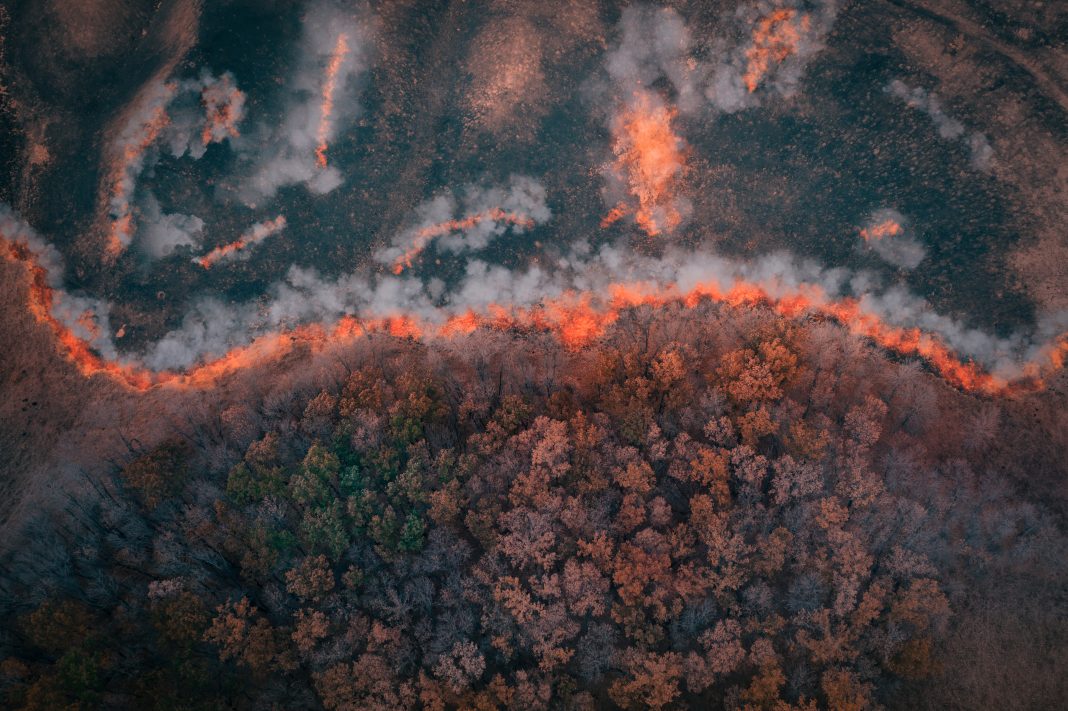Gradually increasing since 2000, carbon dioxide emissions from wildfires peaked drastically in 2021 to a record high of 1.76 billion tons
According to an international team of researchers led by Earth system scientists at the University of California, Irvine carbon dioxide emissions from wildfires reached their highest ever levels in 2021.
Precisely, nearly half a gigaton of carbon, or 1.76 billion tons of CO2, was released from burning boreal forests in North America and Eurasia in 2021. And the research team reported that is is 150% higher than annual mean CO2 emissions between 2000 and 2020.
“According to our measurements, boreal fires in 2021 shattered previous records,” said senior co-author Steven Davis, UCI professor of Earth system science.
“These fires are two decades of rapid warming and extreme drought in Northern Canada and Siberia coming to roost, and unfortunately even this new record may not stand for long.”
Climate-fire feedback is causing more wildfires and more emissions
Worsening fires are part of climate-fire feedback. This is when carbon dioxide emissions warm the planet, which creates a vicious cycle of more fires and more emissions.
“The escalation of wildfires in the boreal region is anticipated to accelerate the release of the large carbon storage in the permafrost soil layer, as well as contribute to the northward expansion of shrubs,” said co-author Yang Chen, a UCI research scientist in Earth system science.
“These factors could potentially lead to further warming and create a more favorable climate for the occurrence of wildfires.”
‘Boreal fires released nearly twice as much CO2 as global aviation in 2021’
“Boreal fires released nearly twice as much CO2 as global aviation in 2021. If this scale of emissions from unmanaged lands becomes a new normal, stabilizing Earth’s climate will be even more challenging than we thought,” Davis explains.
Why is analyzing the amount of carbon dioxide released during wildfires a challenge?
There are a few key reasons why analyzing the amount of carbon dioxide released during wildfires is difficult for Earth system scientists.
To illustrate, the rugged, smoke-enshrouded terrain reduces satellite observations during a combustion event, and space-based measurements are not at a sufficiently fine resolution to reveal details of CO2 emissions.
Moreover, researchers explain that the models used to simulate fuel load, fuel consumption, and fire efficiency work well under ordinary circumstances but are not robust enough to represent the most extreme wildfires.
Furthermore, Chen adds, “Earth’s atmosphere already contains large amounts of carbon dioxide from human fossil fuel burning, and the existing greenhouse gas is difficult to distinguish from that produced by forest fires.”
Techniques used for studying carbon dioxide emissions from wildfires
The team found a way around these hurdles by studying carbon monoxide expelled into the atmosphere during blazes. Combining CO readings from MOPITT – the Measurements Of Pollution In The Troposphere satellite instrument – with existing fire emissions and wind speed datasets, the team reconstructed changes in global fire CO2 emissions from 2000-2021. Carbon monoxide has a shorter lifespan in the atmosphere than CO2, so if scientists detect an anomalous abundance of CO, that provides evidence of fires.
Data sets provided by NASA’s Moderate Resolution Imaging Spectroradiometer aboard the Terra and Aqua satellites confirmed the occurrence of extreme fires in 2021.
“The inversion approach employed in this study is a complementary method to the conventional bottom-up approach, which is based on estimating the burned area, fuel load, and combustion completeness,” Chen said.
“Combining these approaches can result in a more comprehensive understanding of wildfire patterns and their impacts.”
The data analysis revealed links between extensive boreal fires and climate drivers, especially increased annual mean temperatures and short-lived heat waves. The especially vulnerable areas were higher northern latitudes with larger tree cover fractions.
“Wildfire carbon emissions globally were relatively stable at about 2 gigatons per year for the first two decades of the 21st century, but 2021 was the year when emissions really took off,” David concludes.
“About 80% of these CO2 emissions will be recovered through vegetation regrowth, but 20% are lost to the atmosphere in an almost irreversible way, so humans are going to have to find some way to remove that carbon from the air or substantially cut our own production of atmospheric carbon dioxide.”











